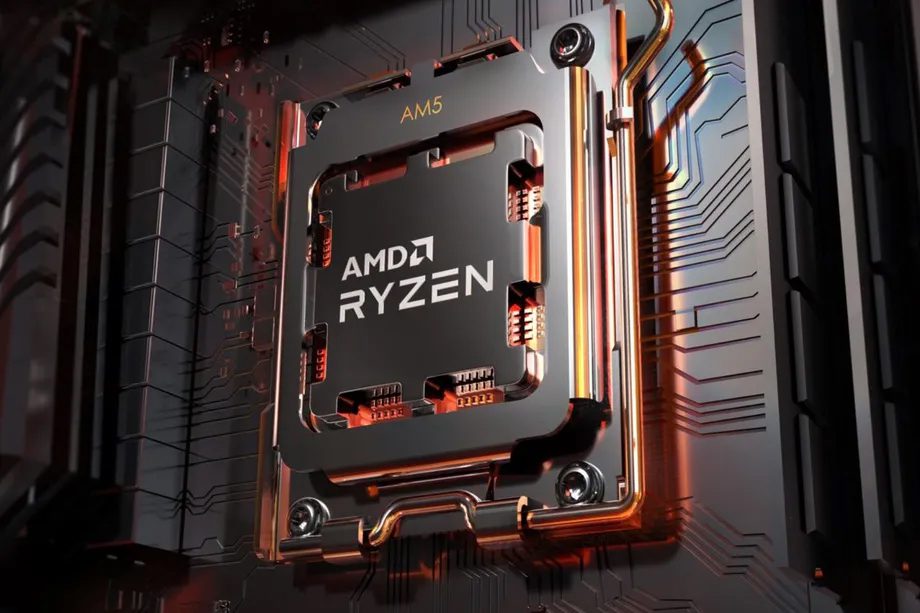AMD Announces Latest Line of Flagship Boards – The X670E
AMD has announced its latest line of Flagship Boards, the X670E. This board will support the new ZEN4 chips from AMD’s flagship Ryzen 7000 series. It is expected that most premium models will be based on this board, with GIGABYTE and MSI following the Aorus Xtreme series. The X670E, however, is more midrange-focused and will be widely affordable.
AMD introduces new 6 nm I/O die for Ryzen 7000
AMD has unveiled details of its new parts at COMPUTEX 2022, focusing on the Ryzen 7000 series. These include new chipsets, PCIe, memory, and more advanced compute and I/O dies. These new parts will also impact the AMD EPYC server processors – codenamed Genoa. AMD is planning to launch the Ryzen 7000 series sometime in fall 2022.
The Ryzen 7000 will feature a 6-nm I/O die and an integrated RDNA2 graphics engine, which should enable users to avoid purchasing a separate graphics card. The new chip is also equipped with a DDR5 memory controller and PCIe 5.0 interconnect controller. The new Ryzen 7 chip will also feature a funky cutout design and an LGA socket connection.
The AMD Ryzen 7000 desktop processors will use an entirely new architecture. It will boost the clock speed by 15% in single thread workloads, while the performance increase is also expected to be higher. It will be the first chip to reach 5.5GHz. The AMD Ryzen 7000 will also feature AMD’s new 6-nm I/O die, making it the first processor in its class to achieve this speed.

AMD Announces Latest Line of Flagship Boards – The X670E
The Zen 4 CPU core is bigger, featuring more number-crunching machinery. The per-core L2 cache will be larger, and the new CPU core includes an iGPU based on the RDNA2 graphics architecture. Most Ryzen 7000 processors will include an integrated graphics module. AMD also plans to launch an AMD Ryzen 7000-based graphics processor.
The Ryzen 7000 series processors will have a new 6 nm I/O die, which will replace the older 14 nm process. The AMD Ryzen 7000 series is expected to offer an increase of up to 15% in single-core performance, while an integrated GPU will help make the chip more powerful. The processors will support up to four displays, and DDR5 and PCIe 5.0 will be supported.
The new Ryzen 7000 desktop processors will be built on the Zen 4 CPU architecture. The Ryzen 7000 chips will feature an increased single-thread performance by 15%, and be capable of speeds up to 5GHz. AMD will also launch a new AMD Socket AM5 motherboard. AMD also teased the Ryzen 7000 series processors at CES 2022.
AM5 motherboards will support the new ZEN4 chips
In the Fall of 2022, AMD will launch three different motherboard chipsets to accompany the new AMD AM5 platform. The three chipsets include the AMD X670 Extreme, AMD B650, and AMD X670. Both are likely to be made on newer, six-nanometer cIOD dies. The X670 Extreme will support up to 24 lanes of PCIe Gen 5 and have PCIe 5.0 PEG. AMD is also bringing support for CPU-attached NVMe.
AMD has been successfully luring gamers and enthusiasts away from Intel with its new architecture. To make the transition as easy as possible, AMD has made five different CPU architectures fit into the AM4 socket, without forcing the buyers of their CPUs to buy a whole new motherboard. AMD also pledged to support AM4 motherboards for the foreseeable future. AMD has been releasing test samples of its new processors several quarters in advance of the launch date.

AM5 motherboards will support the new ZEN4 chips
The new ZEN4 chips from AMD will have a significantly higher clock speed than the Zen 3 and will have generation-on-generation process improvements. These improvements should translate into faster single-threaded performance than Zen 3. Depending on the application, this chip may also have higher power consumption. Fortunately, AMD’s AM5 motherboards will support the new ZEN4 chips. AMD’s new platform will help enthusiasts get the most out of their computers.
AMD will also launch AMD Ryzen 7000 CPUs on the AM5 platform. The Ryzen 7000 family of processors is the first in the Zen 4 core architecture to hit the AM5 platform. AMD confirmed the new CPUs’ availability as the first ZEN4 processors for the AM5 platform. The CPU is clearly an engineering sample of the new AMD Ryzen 7000 ‘Zen 4’ core architecture. It runs at 1.532V, which is high for a CPU that is intended for LN2-OC usage.
The new AMD 600 series motherboards are also expected to launch in Fall 2022. These motherboards will support DDR5 memory and feature up to 24 ultra-fast PCIe lanes. They will also feature 14 super-fast USB ports with a maximum speed of 20GB/s. AMD will release a variety of motherboards for the new AM5 platform, targeting different segments of users.
TSMC could provide density improvement of as much as 87%
WikiChip has found that TSMC could provide an eighty-seven percent transistor density improvement for the upcoming ZEN4 chip. The chipmaker has worked directly with AMD to produce Ryzen processors. This may be a good sign for AMD’s upcoming ZEN4 processor. Despite its smaller size, transistor density is vital to processor performance.
While AMD is working with TSMC to develop new CPUs, this move may also benefit the company’s own upcoming EPYC and ZEN4 processors. AMD and TSMC are expected to launch ZEN 4 and EPYC-based processors in 2021. TSMC has also been working on an improved 5nm process node with the goal of enabling a higher density for future CPUs. Its latest partnership with Huawei is another sign of AMD’s confidence in its technology.

TSMC could provide density improvement of as much as 87%
AMD’s Zen 4 CPUs could be manufactured on TSMC’s 5nm process, a breakthrough in semiconductor manufacturing that promises 30% better performance and 15% lower power consumption. In addition to AMD’s 1.8X transistor density, the new Zen architecture will allow for higher IPCs, making it a desirable candidate for laptops and new form factors.
While the official launch of the upcoming ZEN4 is still unknown, rumors suggest that the new CPU could be unveiled at the Computex 2022 tech convention in Japan. If it does, it will probably be launched with the X670 series of AMD’s AM5 motherboards during the third quarter of 2022. A similar launch date could occur in 2023 for Ryzen 7000 series processors, though the Zen 4 should be available in the second half of 2022.
Boosting clock speeds to over 5GHz would be a big improvement for AMD
Traditionally, AMD has relied on brute memory bus width to solve its memory management problems. With the launch of Infinity Cache in RDNA2, AMD was able to compete with NVIDIA’s GPUs, which offer faster GDDR6X memory types and 384-bit memory interfaces. It’s not clear whether AMD plans to follow the same path with its next-generation ASIC, but it is rumored that they’re working on a 384-bit memory interface.
AMD’s first-generation Ryzen processors launched three years ago, and the results were shocking. AMD’s Ryzen processors doubled the number of cores over Intel’s flagship offerings while adding more threads. But despite these improvements, AMD’s CPUs still fall short of Intel’s flagship offerings.

Boosting clock speeds to over 5GHz would be a big improvement for AMD
In the future, AMD’s flagship desktop processor, the Ryzen 7000 series, will have a brand new “Zen” microarchitecture. It will boost single-threaded performance by 15% compared to the current Zen 3 architecture and feature a doubled L2 cache. This should be AMD’s most significant release since the introduction of Ryzen in 2017.
Adding SLI support to AMD’s flagship X670 motherboards would be a huge step forward for the company’s Ryzen 7000 processors. Those chipsets will enable users to support four displays at the same time. Furthermore, the X670 motherboards will support the latest PCIe 5.0 standard. AMD is working with Phison to make its next-generation PCIe 5.0 SSDs. The company claims that these SSDs are 60 percent faster than PCIe 4.0 SSDs.
The AMD Ryzen 3000 series introduced the new Zen 2 architecture. The Zen architecture introduced the AM4 socket and DDR4 memory to the mainstream market. With the launch of the Ryzen 3900X, AMD is aiming to compete with the Intel Core i9-9900K and the Core i9-9900K. AMD also released the Ryzen 7 3700X, which costs PS480.
The AMD Ryzen 7000 Desktop CPUs are slated to launch later this fall. The new chips are designed using 3nm technology and are expected to support DDR5 and PCIe Gen 5.0. AMD’s next-generation Ryzen processors will be manufactured at 3nm using a three-nanometer process.






